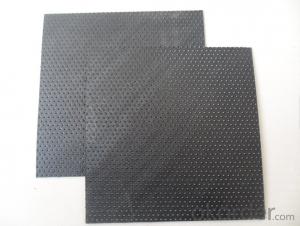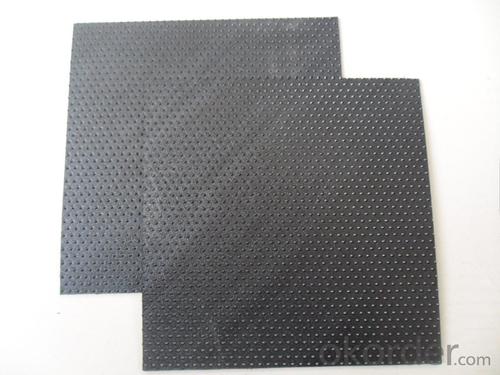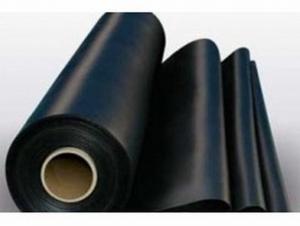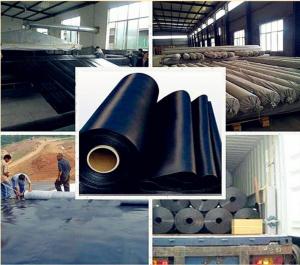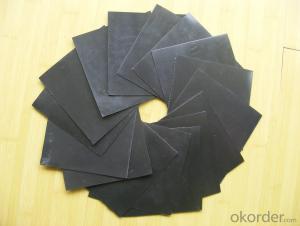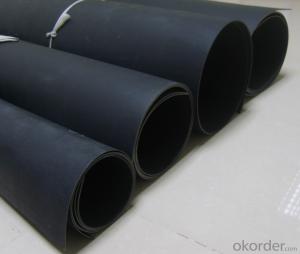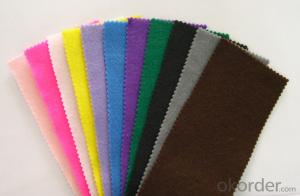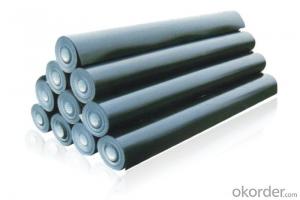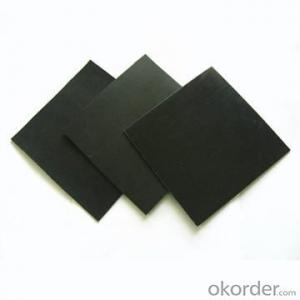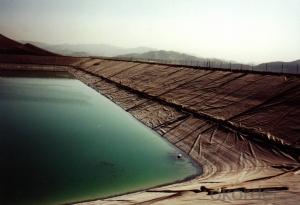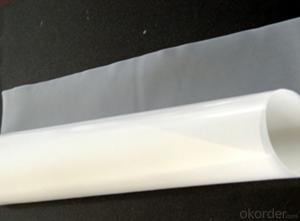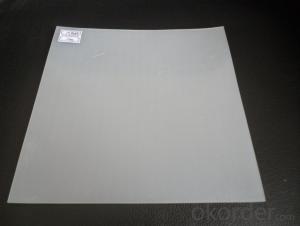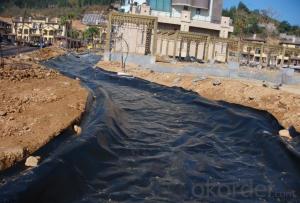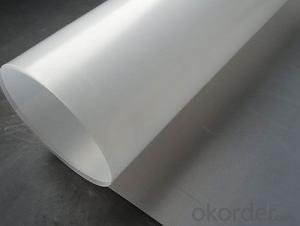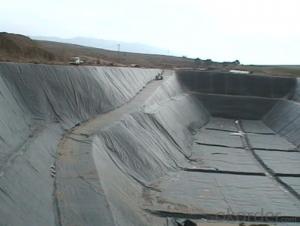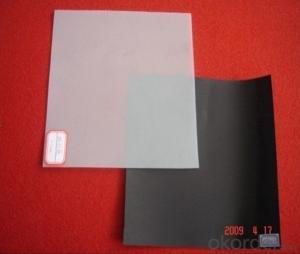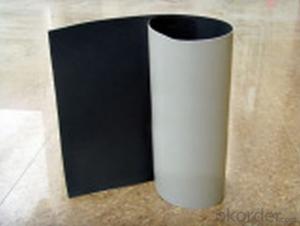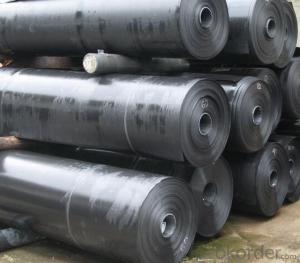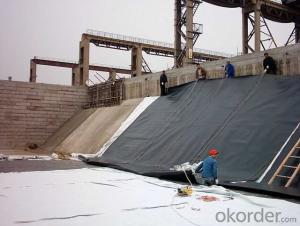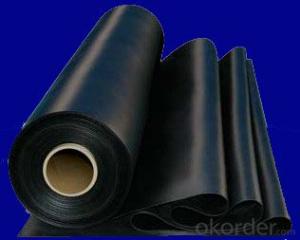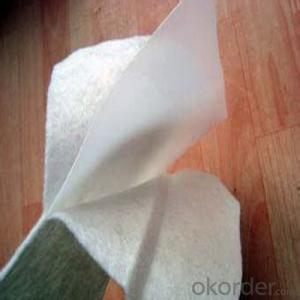Harga Geomembrane Geocomposite Membrane for Landfill to Prevent Waste Water
- Loading Port:
- Qingdao
- Payment Terms:
- TT OR LC
- Min Order Qty:
- 5000 m²
- Supply Capability:
- 500000 m²/month
OKorder Service Pledge
OKorder Financial Service
You Might Also Like
Geocomposite Membrane for Landfill Images
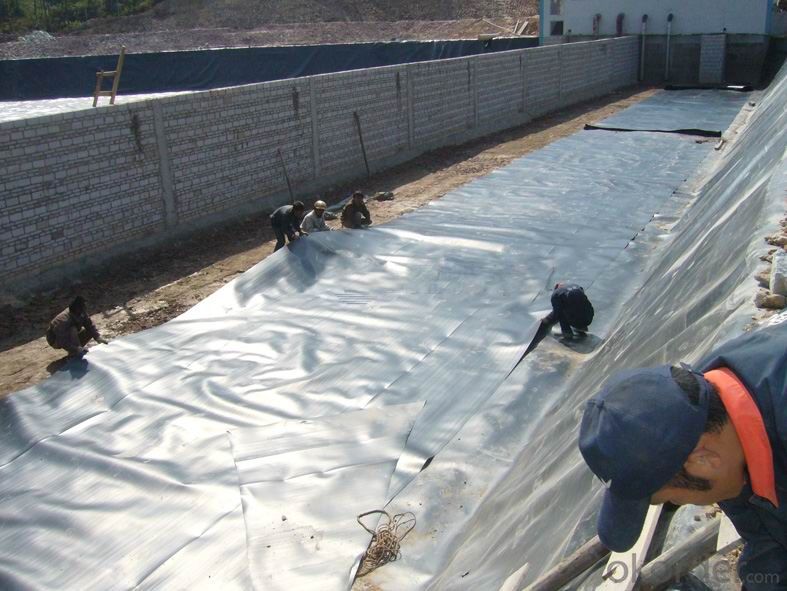
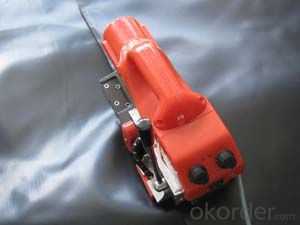
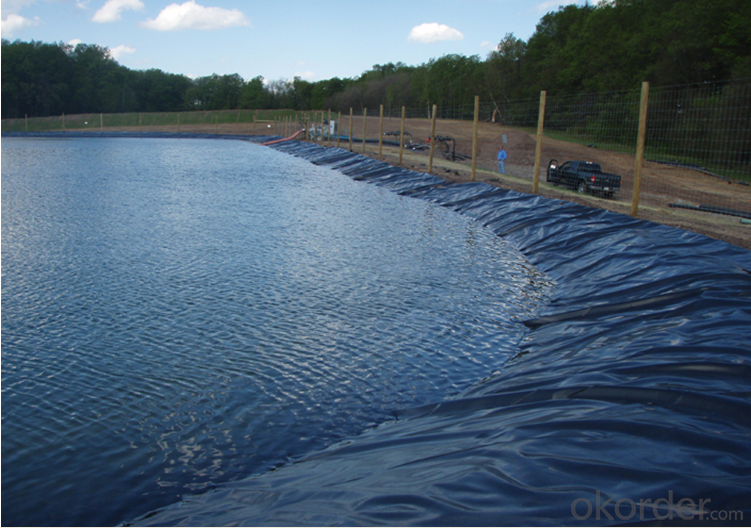
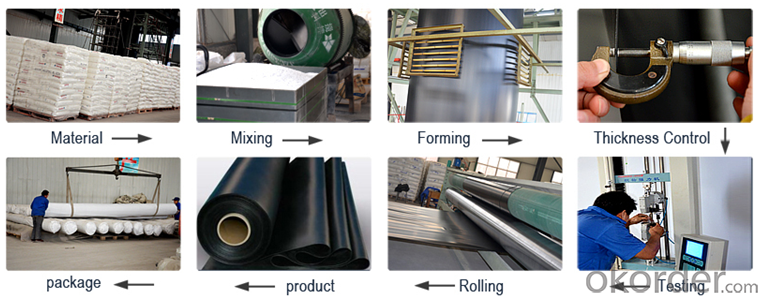
Geocomposite Membrane for Landfill Specification :
No. | Item | Test Value | |||||||||
0.75mm | 1.0 mm | 1.25 mm | 1.5 mm | 2.0 mm | 2.5 mm | 3.0mm | |||||
1 | Minimum Density(g/cm³) | 0.939 | |||||||||
2 | Tensile Property | ||||||||||
Yield Strength ,N/mm | 11 | 15 | 18 | 22 | 29 | 37 | 44 | ||||
Break Strength ,N/mm | 20 | 27 | 33 | 40 | 53 | 67 | 80 | ||||
Yield Elongation ,% | 12 | ||||||||||
Break Elongation ,% | 700 | ||||||||||
3 | Tear Resistance N | 93 | 125 | 156 | 187 | 249 | 311 | 374 | |||
4 | Puncture Resistance N | 240 | 320 | 400 | 480 | 640 | 800 | 960 | |||
5 | Stress Crack Resistance, hrs | 300 | |||||||||
6
| Carbon Black | ||||||||||
Carbon Black Content, % | 2.0-3.0 | ||||||||||
Carbon Black Dispersion | Carbon black dispersion(only near spherical agglomerates) for 10 different views 9 in categories 1 or 2 and 1 in category 3 | ||||||||||
7
| Oxidative induction time(OIT) | ||||||||||
Standard OTI Min | 100 | ||||||||||
High Pressure OTI Min | 400 | ||||||||||
8 | Oven aging at 85℃ | ||||||||||
Standard OIT-% retained after 90 days | 55 | ||||||||||
High pressure OIT-% retained after 90 days | 80 | ||||||||||
9 | UV Resistance | ||||||||||
Standard OIT retained after 1600 hrs | 50 | ||||||||||
High pressure OIT retained after 1600 hrs | 50 | ||||||||||
10 | Low tempreture impact brittle property at -70°C | Pass | |||||||||
11 | Water vapor permeability (g.cm/cm2 .s.Pa) | ≤1.0×10-13 | |||||||||
12 | Dimensional Stability (%) | ±2 | |||||||||
FAQ:
1. How about the delivery time?
Two weeks upon receipt of down payment.
2. What kind of payments do we accepted?
T/T, L/C, WesternUnion, MoneyGram.
3. What's are the MOQ?
Normally the MOQ is 5000 SQM in theory.
And we can provide you free samples for quality inspection.
4. Do you charge for the samples?
Accordeing to our company policy, the samples are freee, we only charge the freight fee. And we will return the freight fee in your second order.
5. Can you produce the product according to customers' requirements?
Sure, we are professional manufacturer, OEM and ODM are both welcome
- Q: Can geomembranes be used in fish hatcheries and aquaponics systems?
- Yes, geomembranes can be used in fish hatcheries and aquaponics systems. Geomembranes are impermeable liners that are commonly used for lining ponds, tanks, and other containment systems. They can help prevent water leakage and maintain proper water levels, which is crucial for fish hatcheries and aquaponics systems. Additionally, geomembranes can also protect the underlying soil from contamination and help maintain water quality, making them suitable for these applications.
- Q: Can geomembranes be used for green roofs?
- Yes, geomembranes can be used for green roofs. Geomembranes provide a waterproof and durable barrier, which is essential for protecting the roof structure. They can be used as a base layer to prevent water leakage and provide stability for the green roof system. Additionally, geomembranes help in retaining water and prevent it from seeping into the building, thus contributing to the overall sustainability and longevity of green roofs.
- Q: Can geomembranes be used for agricultural irrigation ponds?
- Yes, geomembranes can be used for agricultural irrigation ponds. Geomembranes are durable and impermeable liners that can effectively contain water and prevent seepage, making them suitable for creating and maintaining irrigation ponds in agricultural settings.
- Q: how to use the wall poster transfer membrane?
- Paste 1. Before you begin, make ready tools: Scissors, knives, card, or bank card. First, use the scissor to cut the blank part of the picture surroundings, and it is easy to paste; 2. the transfer film attached to the pattern, and card or bank card scraping back and forth repeatedly on the transfer film several times, so that pattern transfer film more good stick together, there will be no air bubbles attached after the wall; 3. remove the membrane which stick the picture from the bottom paper. if the picture is not pasted in the membrane, you can use the knife to cut it. When attached to a relatively large area pattern, the pattern may be turned to the back of paper and torn from a membrane and the picture; before going to the step 4, the first transfer film cut scrap pick a corner wall test wall performance, make sure the wall having no problem and then paste it. if the wall surface can be dropped powder or when tearing the membrane the wall paint may also be dropped down, please paste it after treatment; 4 texture case when the transfer film can first corner of the first stick to the wall then slowly slow will stick with transfer film along the downward direction of the pattern on the wall, followed by a card from the middle of the pattern repeated strokes of direction around, so better stick wall stickers on the wall; 5 transfer film time to tear away from the wall, try slower, you can while pressing the pattern transfer film tear off one side, the pattern must not be torn up together. Reminder: if you afraid it can't tear down after pasting, you can have a sticker affixed in place with hot water (40-50 degrees) or heating with a hair dryer blowing and tear, it is OK, if you fear to tear down with the glass as well as plastic (available heat water, alcohol, gasoline, kerosene) the stuff can be cleaned.
- Q: How thick is the film for furniture? how to differentiate the home film from other films.
- Probably 200 microns thick Ha. Furniture screen protector for high-end furniture table: Such as marble furniture, all kinds of furniture, glass, furniture, piano, matt lacquer furniture, mahogany furniture, oak furniture, gold furniture, silver furniture. Furniture paste it protects furniture never scratch, fade and damage to the outside world, while not affecting your furniture aesthetic effect.
- Q: How do geomembranes contribute to contaminated site remediation?
- Geomembranes are impermeable liners that are used in contaminated site remediation to prevent the spread and migration of contaminants. By acting as a barrier, geomembranes help contain and isolate the contaminants, minimizing their impact on surrounding soil, water, and air. Additionally, geomembranes can be used to create containment cells or caps, preventing further contamination and allowing for effective remediation activities such as excavation, treatment, or monitoring. Overall, geomembranes play a crucial role in the successful remediation of contaminated sites by providing an effective and reliable containment solution.
- Q: What are the sticking methods of computer film?
- , first step of film sticking: aim the film marked ① at the screen and pull the ① layer of release liner label, slowly tear a part of this layer, pay attention not to touch the adsorbed layer (middle layer) of the protective?film with fingers. Second step of film sticking: aim the adsorbed layer at the screen corner, make sure that the position is aligned, smooth the film carefully while tearing off the backing layer ① release liner. Because present protective film has electrostatic automatic adsorption function, generally it does not need be ironed too much. The action should be slow when sticking the film, and it is recommended to start sticking along the long side of the screen, from point to line, from line to surface successively
- Q: What are the types of geomembranes?
- There are several types of geomembranes, including high-density polyethylene (HDPE), low-density polyethylene (LDPE), polyvinyl chloride (PVC), ethylene propylene diene monomer (EPDM), and chlorosulfonated polyethylene (CSPE).
- Q: What is the HDPE geomembrane of rough surface?
- The rough surface HDPE geomembrane material is composed of 97.5% high-quality polyethylene, 2.5% carbon black, trace antioxidant and heat stabilizer. The rough surface is the result of a special co-extrusion process, the process is a molding production, the most important characteristic rough surface HDPE geomembrane offer is that it can increase the stability of the slope material, from Ji-light delay Gan hoot imitation dec containing wet splashing and ultimately HDPE geomembrane can carry Kongyong Rong maximize product adapted to the characteristics of the laying of a steep slope in cost savings but also improve design capabilities.
- Q: What is a geomembrane used for?
- The geomembraneis is impermeable material made of plastic film as anti-seepage material, and composites with non woven fabric. Its anti-seepage property mainly depends on the anti-seepage property of plastic film. At present, the domestic and foreign anti seepage application of plastic film, mainly polyvinyl chloride (PVC) and polyethylene (PE), they are a kind of polymer chemistry of flexible material, a smaller proportion, extending, strong adaptability to the deformation of high.
Send your message to us
Harga Geomembrane Geocomposite Membrane for Landfill to Prevent Waste Water
- Loading Port:
- Qingdao
- Payment Terms:
- TT OR LC
- Min Order Qty:
- 5000 m²
- Supply Capability:
- 500000 m²/month
OKorder Service Pledge
OKorder Financial Service
Similar products
Hot products
Hot Searches
Related keywords
